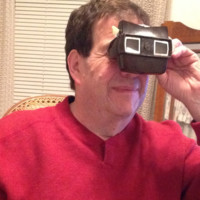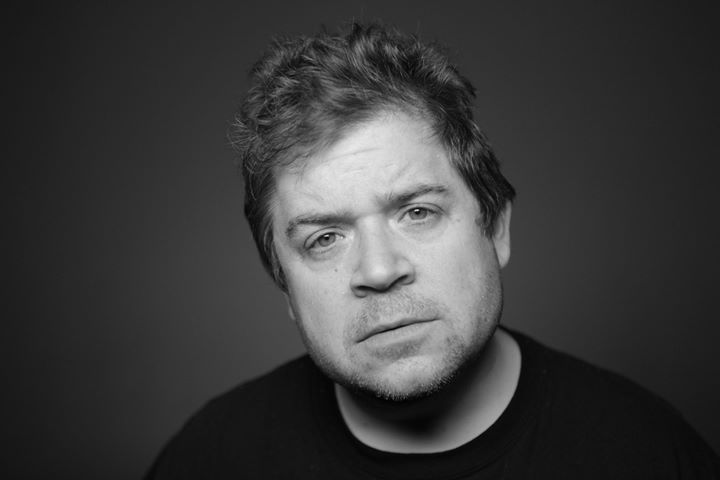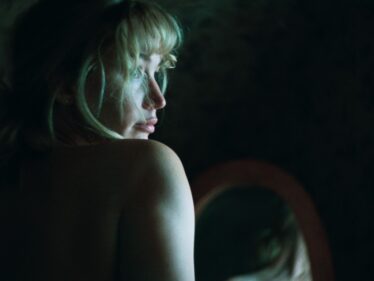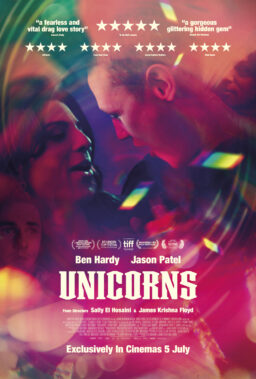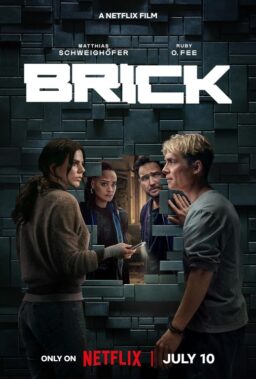“People come into your cave with 200 year-old carpet, the guy tears
your ticket in half, too late to turn back now… the stuff laid out on the candy
counter. Then you come over here where it’s dark, could be anything in there,
and you say, ‘Here I am, what have you got for me?”—John Goodman in Joe Dante’s
“Matinee.”
Patton Oswalt likes to watch.
He has written a book about it, “Silver Screen
Fiend: Learning About Life From an Addiction to Film,” which is both a
reflection on obsessive movie-going and a portrait of the artist as a young
comedian.
As a self-described “addiction
memoir,” “Silver Screen Fiend” is far less harrowing than most. Perhaps the
book’s closest equivalent to hitting rock bottom may be a bender of “Plan Nine
from Outer Space,” “I Married a Monster from Outer Space,” “The Tingler,” “Mr.
Sardonicus” and “Daughter of Horror” that Oswalt binged on at Hollywood’s
venerable Cinerama Dome on Nov. 1, 1997.
This date is noted in Oswalt’s
film log that is included in the book’s Appendix and comprises four years of
theatre hopping, beginning in 1995, when Oswalt was 26 years old, with a Billy
Wilder double-feature of “Sunset Boulevard” and “Ace in the Hole” at the New
Beverly Cinema (currently under the auspices of Quentin Tarantino) and ending
with “Star Wars Episode 1: The Phantom Menace” at the Vista Theatre.
Those well-versed in Oswalt’s
comedy may want to check the log for Dec. 24, 1996. Yes, there it is: “Jerry
Maguire” at the Galaxy Cinema, the setting for one of his most indelibly funny stories
about attending this Christmas Eve screening with his brother. Check it out in his stand-up special “Finest
Hour.” He does not repeat it in the book. “I had done the bit,” he said in a
phone interview with RogerEbert.com. “I didn’t want it to feel like I was
recycling my standup for a book.”
The movies loom large in Oswalt’s
life, career (he is one of the screen’s most welcome, and active, character
actors) and comedy. “Phantom Menace” inspired his time travel fantasy “At
Midnight I Will Kill George Lucas with a Shovel” on his second CD, “Werewolves
and Lollipops.” “Finest Hour” also yields his monkey excrement-filled take on
romantic comedies. His epic nearly nine-minute “Star Wars” filibuster on “Parks
and Recreation” has received more than 3,253,000 views on YouTube.

At a time when Oswalt was finding
his voice and honing his craft on the standup stage, he haunted art houses and
repertory theatres, bent on “seeing every movie I could,” he writes. Guided
primarily by five sacred texts, “The Film Noir Encyclopedia” (a genre habit he
picked up during his three years living in San Francisco, where he attended the
Roxie Theatre’s annual noir festival), Daniel Peary’s “Cult Movies” trilogy and
Michael Waldon’s “Psychotronic Encyclopedia of Films,” he became one of demented
Norma Desmond’s “wonderful people in the dark.”
“I was looking back at what I was into
and obsessed with before I became a father,” he said. “A lot of that went away
with fatherhood, but (with this book) I wanted to kind of nod to the fact that
that is where I came from and a lot of what I now put into my fathering and my
husbanding and my being a more mature person came from a lot of years I was
afraid I’d wasted inside a movie theatre. It turns out I didn’t. I wanted to
give (those years) their due.”
The movies were not just a source
of comedic inspiration for this canny and subversive observer of popular
culture. He calls the New Beverly his $5 film school. “It was my delusion I was
training to be a director,” he said. “Then all these other things reared
themselves into my path. I was never thinking in terms of being an actor. It
just sort of happened.”
Here, too, the movies offered an
object lesson. In “Silver Screen Fiend,” Oswalt, recalls his screen debut in
“Down Periscope” and taking inspiration from “lifer actors” such as Clint
Howard in delivering his one line, “There’s a call for you, sir. Admiral
Graham.”
The gateway film for Oswalt’s film
addiction was the already the hard stuff, “Nosferatu,” seen at the tender age
of five at a local library’s Halloween festivities. Oswalt briefly revisits
this fateful encounter that he first wrote about in his 2011 bestselling memoir
“Zombie Spaceship Wasteland.”
“This little square of light
projected against a wall on an 8mm projector,” he said. “It just drew the whole
room into it and terrified everybody. (I thought), ‘What is that, how does that work, I want to
be a part of that.’”
Oswalt’s film log is prodigious
and would itself make an impressive checklist for budding film geeks willing to
follow Oswalt through the looking glass and down the rabbit hole. Prior to his
immersion into cinephilia, he said, he had read such books as “Midnight Movies”
by J. Hoberman and Jonathan Rosenbaum as well as Roger Ebert’s movie guides.
“His ‘Great Movies’ essays were a big deal for me,” he said.
(It is a testament to Oswalt’s
esteem for Ebert that in setting the scene for “Silver Screen Fiend,” he
includes among four quotes about the movies, Ebert’s maxim, “No good movie is
too long and no bad movie is short enough”).

One of the book’s ancillary
pleasures is Oswalt’s keen writing about directors, actors and specific
films. When asked which classic film
perhaps surprised him the most, he responded, “One that I figured I would
either hate or it wouldn’t speak to me was Ingmar Bergman’s ‘The Seventh
Seal.’ I figured I should see this movie
because that’s what I should do, it’s a classic, and I was amazed at how
genuinely funny and human it was. It really spoke to me more than I thought it
would.
“Along the same lines, I guess I
have to watch Francois Truffaut’s ‘Jules and Jim’ again. Man, that did not
click with me for some reason. It was too cinematic, too aware of what it was
doing. “
The New Beverly is one of several
venues Oswalt cites in the book as among his “Night Cafes,” a reference to
Vincent van Gogh’s masterpiece and which Oswalt describes as “the room you
enter, and then having been there, forever changed.”
The majority of these for Oswalt were
the comedy clubs that most shaped how he viewed standup and his place in it.
The highest compliment I can pay “Silver Screen Fiend” is that as a stand-up memoir,
it compares favorably with Steve Martin’s “Born Standing Up.”
”I wrote this book under the
shadow of that book, knowing how good that one was,” Oswalt said. “I wanted to
at least breathe the same air that it did. That’s the one that gives you the closest
insight of the stand up’s mind and how a standup thinks. I’m just grateful that
book exists.”
Just as Oswalt put in the
Gladwellian hours in watching films over the course of those four years, so did
he in his pre-comedian years put in the time listening and memorizing his
parents’ comedy records and watching comedians onstage before going onstage
himself.
His gateway comedy album, he
figures, was Bill Cosby’s “Why Is There Air?” and a Jonathan Winters disc whose
title he can’t recall. “Those were the first two comedy albums where when I was
listening to them, I could see the pictures they were painting with the words
and the different characters bouncing back and forth,” he said. “They were very,
very visual, and that was amazing to me.”
The first comedian he saw live, he
said, was perhaps George Carlin in the 1980s at the DAR Constitution Hall in
Washington, D.C. (Oswalt launched his own career in 1988). “At that point I had listened to all of his
albums,” he said. “He was in that transition between the iconic comedian he was
in the 70s and the angrier, older, wiser guy he became in the 90s. He hadn’t
quite figured out how he was going to age gracefully and it was really cool to
see that how he was wrestling with that. It’s a real dilemma for comedians. It
was really fascinating to see that he was an artist and he was going through
phases like any other artist.”
There was a time when an appearance on “The Tonight Show”
with Johnny Carson could make a career. When Carson retired, Oswalt observed, “It
was just about getting good and being prepared for whatever came. An HBO
special was a big deal for us, but by that time there were many different
options for how to bust through. We were the generation for which there wasn’t
just one path.”
One path was the alternative comedy and music club Largo. “A good set could literally change the path of
your life,” Oswalt writes. “I walked back into the kitchen one night and there
was Paul Thomas Anderson, inviting me to be in ‘Magnolia.’ Another night, the
Farrelly brothers came, and I started punching up their movies.”
But Oswalt writes vividly about the bad sets as well. One
virtuoso passage is his stream of consciousness account of his 1992 debut at
the Holy City Zoo in San Francisco. He went up imagining himself as Jack
Nicholson’s Joker (“Wait’ll they get a load of me”). Less than five minutes later,
he walked off the stage “like I had my shins shot off,” he writes.
“It came automatically,” he said of writing the passage. “I
wanted to absolutely embrace what was going on in my thought process, how awful
it was for me and that realization of, ‘You’ve gotta rethink everything that
you thought you knew as a comedian.’ I thought I had this nailed and I was
completely wrong.”
These days, Oswalt has emerged into the light. “Movies—the
truly great ones (and sometimes the truly bad)—should be a drop in the overall
fuel formula for your life,” he writes. He still counts himself as a “movie
guy,” although he believes that TV now is “just as valid an art form.”
As an actor, he said, “I just like doing things that are
interesting. It can be a web short as long as it’s well written. I’m not a snob
to any one kind of medium.”
